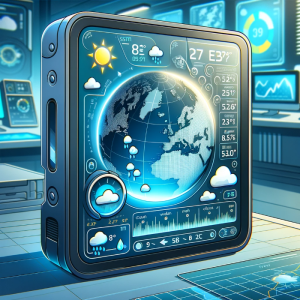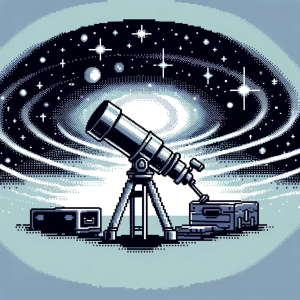
Amateur Radio’s Role in Advancing Heliophysics and Space Weather Research
Amateur radio, often called ham radio, has been a playground for innovation and communication since the early 20th century. Today, it stands at the crossroads of hobby and scientific exploration, particularly in heliophysics, atmospheric, ionospheric, and space physics research. The globally engaged and technically adept amateur radio community has an intense interest in space weather, its underlying physics, and its impact on radio communications. This blog delves into how amateur radio paves the way for new discoveries in these fields.
Harnessing the Power of Global Networks
Amateur radio enthusiasts, equipped with distributed instrumentation, provide an untapped reservoir for large-scale observational capabilities. Well-established networks like the Reverse Beacon Network (RBN), Weak Signal Propagation Reporter Network (WSPRNet), and PSKReporter have provided invaluable bottomside ionospheric observations. This data, when leveraged with up-and-coming purpose-built citizen science networks, presents opportunities for advancements in space weather prediction and understanding.
Collaboration: The Key to Advancement
The collaboration between amateur radio enthusiasts and the professional scientific community is pivotal. Fueled by shared interests and goals, this partnership is continually evolving, with amateurs often making discoveries or technological advances that contribute significantly to the field. On the other hand, professional scientists offer a deeper understanding of the underlying physics, which can enhance the operational effectiveness of amateur radio communications.
Peer-Reviewed Contributions and Recommendations
Recent peer-reviewed studies have underscored the significant contributions of the amateur radio community to heliophysics. These studies utilize the data from amateur radio networks to investigate various phenomena, including the ionospheric impacts of solar flares, geomagnetic storms, and other space weather events. Building on this, there are specific recommendations to further advance the use of amateur radio in heliophysics:
- Increased Support for Observational Capabilities: Encouraging the development and support of distributed instrumentation among amateur operators and enthusiasts.
- Novel Transmission Development: Innovating new modes of transmissions that can be used for citizen science experiments.
- Integration into Space Weather Framework: Formally incorporating amateur radio observational assets into the Space Weather R2O2R framework.
- Facilitating Research and Education Collaborations: Encouraging partnerships with amateur radio communities and organizations for research and educational activities.
The Future of Amateur Radio and Heliophysics
Integrating amateur radio into the broader scientific community is more important than ever as we move forward. By fostering a collaborative environment, ensuring diverse and inclusive participation, and continually innovating, amateur radio will continue to play a vital role in advancing our understanding of heliophysics and space weather. This partnership benefits the scientific community and enriches the amateur radio community by providing a deeper understanding and new avenues for exploration.
Amateur radio is not just a hobby; it’s a gateway to understanding our universe better. As this partnership evolves, it promises to unlock new scientific discoveries and foster a deeper appreciation for the natural phenomena that shape our space environment.
Embark on a Scientific Adventure:
Join ‘This Week in Science’ and explore the universe of knowledge! Our weekly newsletter is crafted for educators and enthusiasts, bringing you the latest and most exciting scientific discoveries. Every issue is packed with cutting-edge research, breakthroughs, and captivating stories from the world of science. Subscribe now for free and transform your teaching and learning experiences. Embark on your path to becoming more knowledgeable and connected with the ever-evolving world of science.



